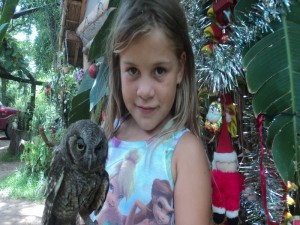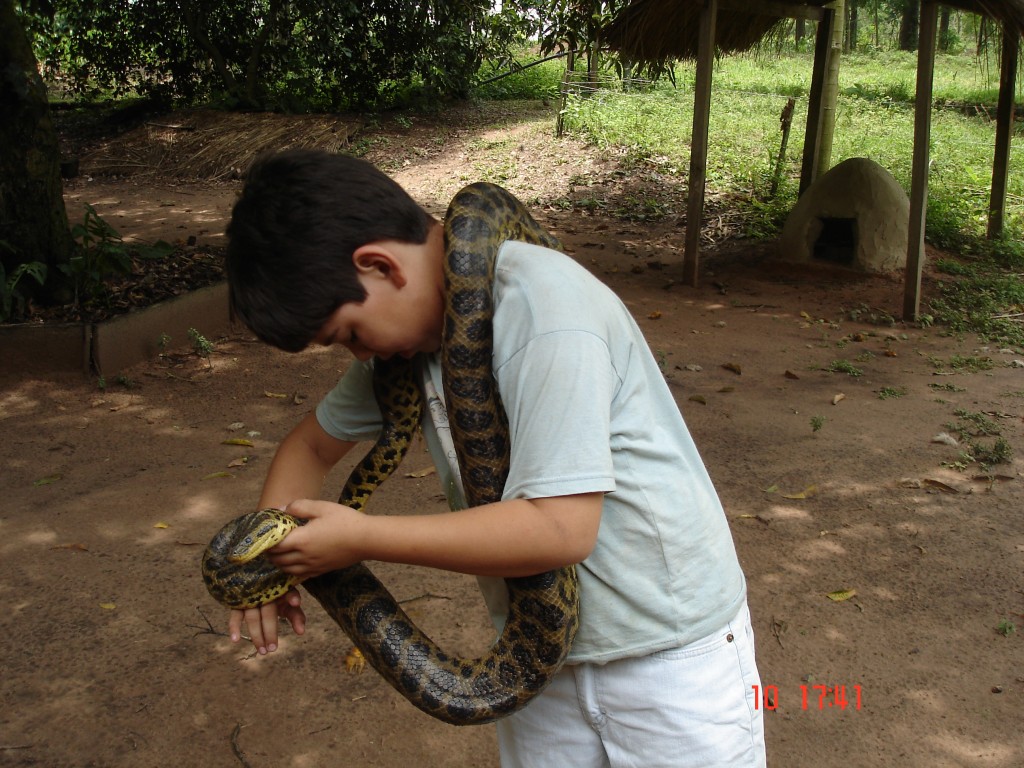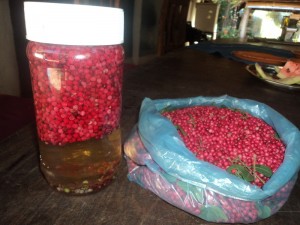We bought the farmland in 1996. It possessed no trees, nor water and had no wildlife at all.
The last 17 years we have worked hard to produce an environment that encourages nature to prosper. Native Paraguayan trees have been planted, and natural lakes created – which encourage frogs and insects. At night it is truly extraordinary the noise that the thousands of frogs make in the tropical heat.
I have left corners of the farm untouched and wild. At the moment we have a family of foxes and guinea pigs in these areas. We also take dead wood from the forests and leave it in rotting piles – this is a hot spot for all types of reptiles. We have planted many indigenous fruit trees which have encouraged the Tucans, Tucanettes and Tanagars to return. I do not use insecticides or inorganic fertilizer and this has meant many insects have returned. And for the first time last year we had a Morpho butterfly family.
Regarding the investigation of Piotr Angiel (birds), Alice Huges (birds, bats and other mammals) and Dr Koehler (Amph.-Rept.) El Roble is housing now more than 130 species of birds, more than 30 species of amph.-rept. and equal amount of mammals. The last big surprise is the appearance of an “Eyra Cat” (Puma yagouaroundi eyra)
and the proof of the very rare water-rat Nectomys squamipes.
El Roble is also a working farm and we provide produce not only for our clients but also the Concepcion Palace. We have a large vegetable garden and fruit trees which supply a good variety of vegetarian food as well as marmalades, juices, liquors and our famous sauerkraut.
With our dairy-business we also produce butter, cream and different kinds of cheese. Cheese that has appeared in this publication.
Male calves are raised until 200-300 kg for our own supply.
We raise large-white pigs. I’ve developed a smoking facility and people have been known to travel from Asuncion to sample our pork products.
In 40.000 square meters of water we produce high quality fish like Surubi, Pacu, different Carps, Tilapia, Aals and crawfish. We are in the proces of transforming this activity (the first in Paraguay) as a complete biodynamic production based mainly in native palm nuts (Karanday) dug weed (Wolffia arhiza) and Artemia Nauplin.
Our reforestations serve us as permanent supply of wood for building and firewood since all our food and the daily bread are cooked on a woodstove. Nevertheless the surface of forest is increasing slowly.

I wish to increase the size of all my wildlife projects but unfortunately I do not have too much space and I do have to live off the land. However land in Paraguay is relatively cheap, and anyone who is interested in expanding the nature projects of El Roble with me further can contact me to discuss ideas. A rough price is 2000 US dollars for one hectare of land, although there are many different types of opportunities for those interested in nature expansion.
We have also developed into a local sanctuary. Many people bring animals and reptiles to us that they have found mistreated or close to death and we work hard to bring them back to full strength.


